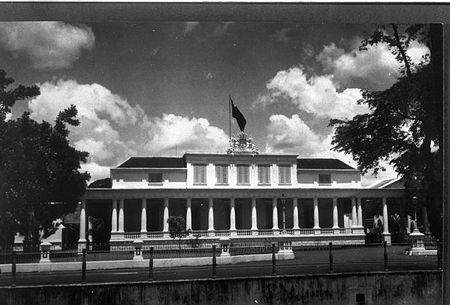Istana Negara (Jakarta)

Istana Negara (English: State Palace, Dutch: Paleis te Rijswijk) is one of the six presidential palaces of Indonesia. It is located on Veteran Street in Central Jakarta, with Merdeka Palace located south. It is part of the presidential palace compound which has a total area of 68,000 m², along with three other buildings: Bina Graha that was formerly used as the President's Office, Wisma Negara in the western side which is used as state guest house, and the office for the Ministry of State Secretariat of Indonesia. Istana Negara faces north towards aforementioned street, while the Merdeka Palace faces Merdeka Square and the National Monument (Monas).
Excerpt from the Wikipedia article Istana Negara (Jakarta) (License: CC BY-SA 3.0, Authors, Images).Istana Negara (Jakarta)
Jalan Veteran, Special Capital Region of Jakarta Gambir (Central Jakarta)
Geographical coordinates (GPS) Address Nearby Places Show on map
Geographical coordinates (GPS)
| Latitude | Longitude |
|---|---|
| N -6.1679805555556 ° | E 106.8239 ° |
Address
Istana Negara
Jalan Veteran
10110 Special Capital Region of Jakarta, Gambir (Central Jakarta)
Indonesia
Open on Google Maps









